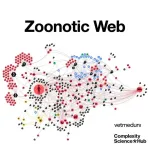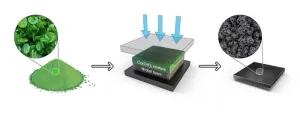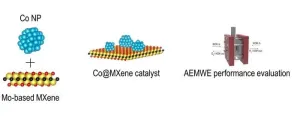A multi-institutional research team led by York University and including the University of Alberta, Environment and Climate Change Canada, Manitoba Sustainable Development, Ontario Ministry of Natural Resources and Forestry, and Polar Bears International, used three different “burr on fur” prototypes to study their effectiveness.
The paper, “Telemetry without collars: performance of fur- and ear-mounted satellite tags for evaluating the movement and behavior of polar bears,” published in the journal Animal Biotelemetry, details the first peer-reviewed examination of these new tracking devices that adhere to the fur of polar bears.
Studying polar bears is a difficult feat with current radio collars only suitable to be used on female bears leaving out a swath of the population, but new technology is providing researchers with a new tool which has confirmed the behaviour of adult male polar bears while on land waiting for the ice to form again.
Efforts to develop less-invasive tracking options and tools that could work on polar bears of both sexes and nearly all ages have been ongoing for years with varying success. Collars have been and remain the primary means of studying polar bear movements. More recently, ear tag transmitters have been used as a lighter-weight alternative. While both technologies serve an important role in helping study and conserve polar bears, researchers continually strive to develop methods that are both minimally invasive and provide quality data.
This led to a new tracking initiative known as “Burr on Fur,” which began as a challenge from Polar Bears International to 3M scientists, the global science and manufacturing company behind Post-It notes, to create a temporary, simple method for affixing small tracking units to polar bear fur. Three “Burr on Fur” prototypes were recently tested on wild polar bears along the coast of Hudson Bay, Canada, alongside traditional ear tag transmitters.
The shortcomings with traditional tracking methods: The ear tag and “Burr on Fur” devices fill an important niche for scientists and wildlife managers. The new tags allow researchers to follow the movements of adult male and subadult polar bears, two groups that can’t be studied using traditional satellite collars. Adult males can’t wear collars because they slip off their cone-shaped necks and heads, and subadult bears grow too rapidly for safe collar use. Traditional ear tags are an alternative to collars. However, they currently require recapture to remove and, although rare, can pose a risk of injury to the ear. The new Burr on Fur tags are designed to be temporary, minimally invasive, and can be applied to both sexes and nearly all ages of polar bears.
“Successfully attaching telemetry tags to polar bear fur has never been done before, and we’re excited to share the results of this innovative work,” said Tyler Ross, lead author of the paper and researcher at York University, “The fur tags showed great promise, and give researchers the ability to study the behaviors and movements of polar bears that we have very little data on, like subadult and adult male bears.”
The study: 58 wild bears were tagged using ear tags and three distinct fur tag designs to compare both the duration of time the tags remained active while attached to the bears and the accuracy of the trackers. Applied alongside a traditional ear tag, which relied on an Argos Transmitter, the three fur tags were:
The Pentagon Tag: this five-sided device included five holes punched into its corners, allowing tufts of fur to be pulled through. It utilized an Argos Eartag Satellite Transmitter. The SeaTrkr Tag: an oval-shaped tag that had 10 holes punched to allow 10 fur-tuft attachments. This design used an Iridium-linked Telonics GPS SeaTrkr-4370 transmitter. The Tribrush Tag: a triangle tag outfitted with tubes along its borders, through which pipe brushes ensnared the fur, twisting it inside the tubes. This tag used the same Argos transmitter as the Pentagon tags. The research took place from autumn 2016 to 2021 with bears handled near Churchill, Canada, by the Polar Bear Alert Program and researchers at the University of Alberta, supplemented with operations by researchers at Environment and Climate Change Canada, Ontario Ministry of Natural Resources and Forestry, York University, and Manitoba Sustainable Development in 2021-22 near the Manitoba-Ontario border.
“Our results are an important step in better understanding the movements and behavior of polar bears, especially adult male bears, which are difficult to track because they can’t be fitted with satellite collars. Temporary, fur-mounted tags could also help track the movements of bears relocated after potentially coming into conflict with people, making these tags an important tool for conserving polar bears and keeping northern communities safe,” says York University Associate Professor and Sustainable Environmental Management Coordinator Gregory Thiemann, the report’s co-author.
Results: The top-performing fur tag was the SeaTrkr Tag, which remained attached to the bears for an average of 58 days and had superior accuracy due to its use of GPS/Iridium technology. In second place, the Trishbrush Tags remained attached for an average of 47 days. However, for the Tribrush Tag, the times varied widely, with one falling off after only two days while another lasted 114 days – the longest of all the tags.
Because they are permanently attached to the bears’ ears, the traditional ear tags remained in place for 137 days on average, while the shorter-term fur-based trackers proved to be reliable for shorter periods. The fur tags proved useful for monitoring bear behavior, and show great promise for future use in tracking polar bears, especially those that must be relocated after approaching too close to communities. Further testing and refinement are also being conducted on bears in zoos and aquariums through Polar Bears International’s Arctic Ambassador Center zoo and aquarium partners, allowing researchers to further refine the designs and see how they perform throughout different seasons. In the most recent round of zoo testing, a refined tag stayed on a bear for 75 days.
Important Data about Male and Subadult Polar Bears: The new data adds to our growing understanding of subadult and adult male polar bear movements and behaviors, which have been historically understudied because they cannot be safely collared for long periods. Findings confirm that adult and subadult male bears reduce their activity while on land, consistent with prior studies that showed bears spent approximately 70 to 90 per cent of their time resting during the ice-free period in Hudson Bay.
Implications: While the ear tags remained attached to the bears longer, the temporary and easily affixed fur tags give scientists a new tool for enhanced tracking of bears for purposes of both applied research and managing human-bear interactions. The tracking tech could be applied to other types of bears, supporting efforts to reduce human-bear conflict, and future applications could include testing on other species with fur. While traditional tracking methods, such as collars, will remain critical for longer-term studies, the fur tags will prove a valuable tool, particularly for understanding and managing increasing wildlife-human interactions as the climate warms.
“The collaboration between Polar Bears International, 3M, academic institutions, and governmental partners is a testament to our commitment to improving Arctic wildlife research and conservation technology,” says Geoff York, Senior Director of Research and Policy at Polar Bears International, adding, “These advancements will have tangible implications for wildlife management, aiding in tracking polar bears and promoting improved human-bear coexistence. We’re eager to further refine and deploy this pivotal technology.”
About Arctic Sea Ice Day: These findings publish on July 15, which is Arctic Sea Ice Day, an annual event created by Polar Bears International to spark actions and conversations about the rapidly melting Arctic ecosystem, including its global significance and how people can help slow this warming trend. The Arctic is now warming nearly four times faster than the rest of the planet, causing the sea ice to melt, which causes polar bears to spend longer periods fasting on land.
Polar Bears International invites people to access the full report and urges the scientific community to consider the implications of these findings for further research and application in conservation and coexistence efforts.
###
About York University
York University is a modern, multi-campus, urban university located in Toronto, Ontario. Backed by a diverse group of students, faculty, staff, alumni and partners, we bring a uniquely global perspective to help solve societal challenges, drive positive change, and prepare our students for success. York's fully bilingual Glendon Campus is home to Southern Ontario's Centre of Excellence for French Language and Bilingual Postsecondary Education. York’s campuses in Costa Rica and India offer students exceptional transnational learning opportunities and innovative programs. Together, we can make things right for our communities, our planet, and our future.
Media Contact:
Sandra McLean, York University Media Relations
sandramc@yorku.ca
+1 416-272-6317
About 3M
3M (NYSE: MMM) believes science helps create a brighter world for everyone. By unlocking the power of people, ideas and science to reimagine what's possible, our global team uniquely addresses the opportunities and challenges of our customers, communities, and planet. Learn how we're working to improve lives and make what's next at 3M.com/news.
About Polar Bears International
Polar Bears International’s mission is to conserve polar bears and the sea ice they depend on. We also work to inspire people to care about the Arctic, the threats to its future, and the connection between this fragile ecosystem and our global climate. Polar Bears International is the only nonprofit organization dedicated solely to wild polar bears and Arctic sea ice, and its staff includes scientists who study wild polar bears. The organization is a recognized leader in polar bear conservation. For more information, visit www.polarbearsinternational.org.
Media Contacts
Annie Edwards, for Polar Bears International
annie@fabricmedia.net
T: +44 07307 139782
Melissa Hourigan, for Polar Bears International
melissa@fabricmedia.net
T: +1 720-608-1919
END






